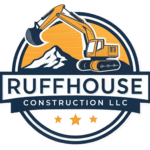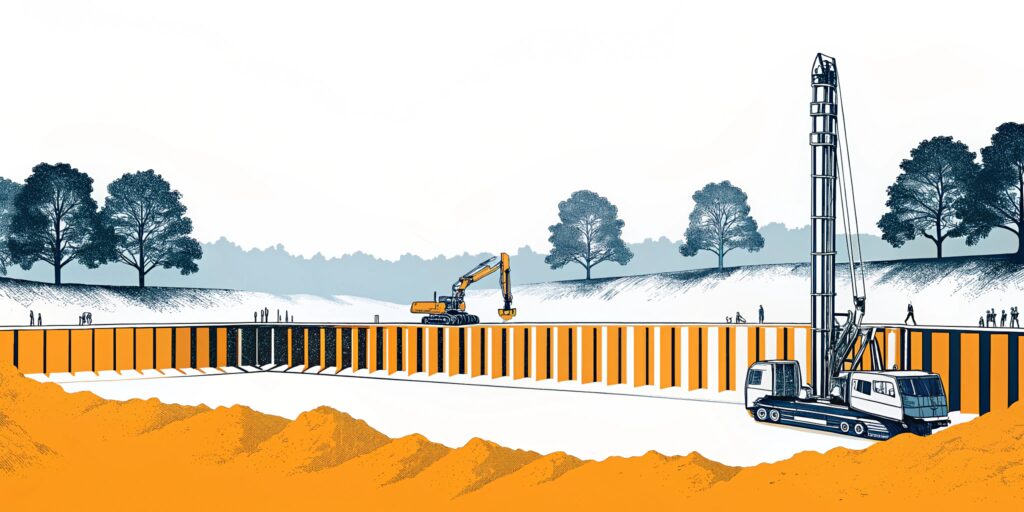When you plan a deep excavation, your top priorities are safety and compliance. Soldier pile and lagging panel systems can deliver robust ground support while keeping your project on schedule.
We understand that every site has unique ground conditions and tight timelines. That’s why we break the process into clear steps to ease your planning and execution.
Understand soldier pile systems
Soldier pile wall shoring starts with driven steel beams at set intervals. Lagging panels slide between piles to retain soil. You use this method in tight urban sites or deep excavations. This system offers flexible installation, reusable components, and reduced excavation footprint. For a detailed overview explore soldier pile wall construction and shoring systems in excavation.
Evaluate site conditions
Assess soil, groundwater, and underground utilities before you begin. Contact utility owners to mark installations. Have geotechnical tests classify soil type and load capacity. That data guides spacing and panel thickness. Tie this insight to your excavation support systems plan.
Meet regulatory requirements
You must follow federal, state, and local codes. OSHA’s construction inspection targeting system uses statistical criteria to select projects. You need daily inspections by a competent person and post-storm reviews. Document findings per excavation shoring regulations and excavation shoring standards. That keeps you audit-ready and prevents project stoppages.
Plan installation process
Map your excavation sequence with clear stages. First excavate a shallow trench for piles. Then drive steel H-beams to design depth. Next insert lagging panels as you excavate further. Coordinate crane, excavator, and survey crew schedules. Use suitable excavation shoring equipment and follow the lagging panel installation process. Train your team on step-by-step procedures before breaking ground.
Implement safety measures
Lean on the hierarchy of controls to manage site hazards. Eliminate loose soil blocks, use shoring before exposure, and enforce PPE use. Provide hard hats, eye protection, and dust masks for excavation crews. Maintain hygiene stations near the trench and prohibit food or drink in dusty zones. Create clear emergency response plans per excavation shoring safety guidelines and excavation shoring best practices.
Monitor and maintain shoring
- Inspect piles, panels, and anchors daily or after rain events
- Remove workers immediately if you spot soil movement
- Record findings in a centralized log book for quality review
- Schedule maintenance to replace damaged panels or tighten anchors
- Integrate digital reporting for faster action and clear oversight
Review your process against excavation shoring quality control and adjust as needed.
Here’s your practical takeaway. Following systematic planning, strict inspections, and robust shoring keeps your site safe and on schedule.
Why choose RuffHouse Construction LLC
- 20+ years of expertise in WA and OR
- Dedicated team of certified geotechnical engineers
- Proven record of on-time delivery for projects up to $50M
- Strict compliance with OSHA and local building codes
Start your project
When you’re ready, let’s discuss how we can secure your next deep excavation with proven soldier pile and lagging panel systems.
Frequently asked questions
-
What are soldier pile and lagging panel systems?
They use vertical steel beams and horizontal panels to retain soil in excavations. -
How often should I inspect my shoring?
Inspect daily and after any rain or hazard event. Document condition and fix issues immediately. -
What regulatory standards apply to these installations?
OSHA construction standards and local building codes set design, inspection, and reporting requirements. -
Can I reuse lagging panels on multiple projects?
Yes when panels are undamaged and cleaned. Follow manufacturer guidelines for reuse. -
How do I determine the right pile spacing?
Pile spacing depends on soil type, excavation depth, and load requirements. Consult a geotechnical engineer.
Ready to start your own soldier pile wall project in Seattle, Tacoma, or anywhere in Puget Sound?
Learn how Ruffhouse Construction delivers safe, code-compliant soldier pile and lagging wall installations for any site.
See our Soldier Pile Installation Services for details and request a free estimate today.

